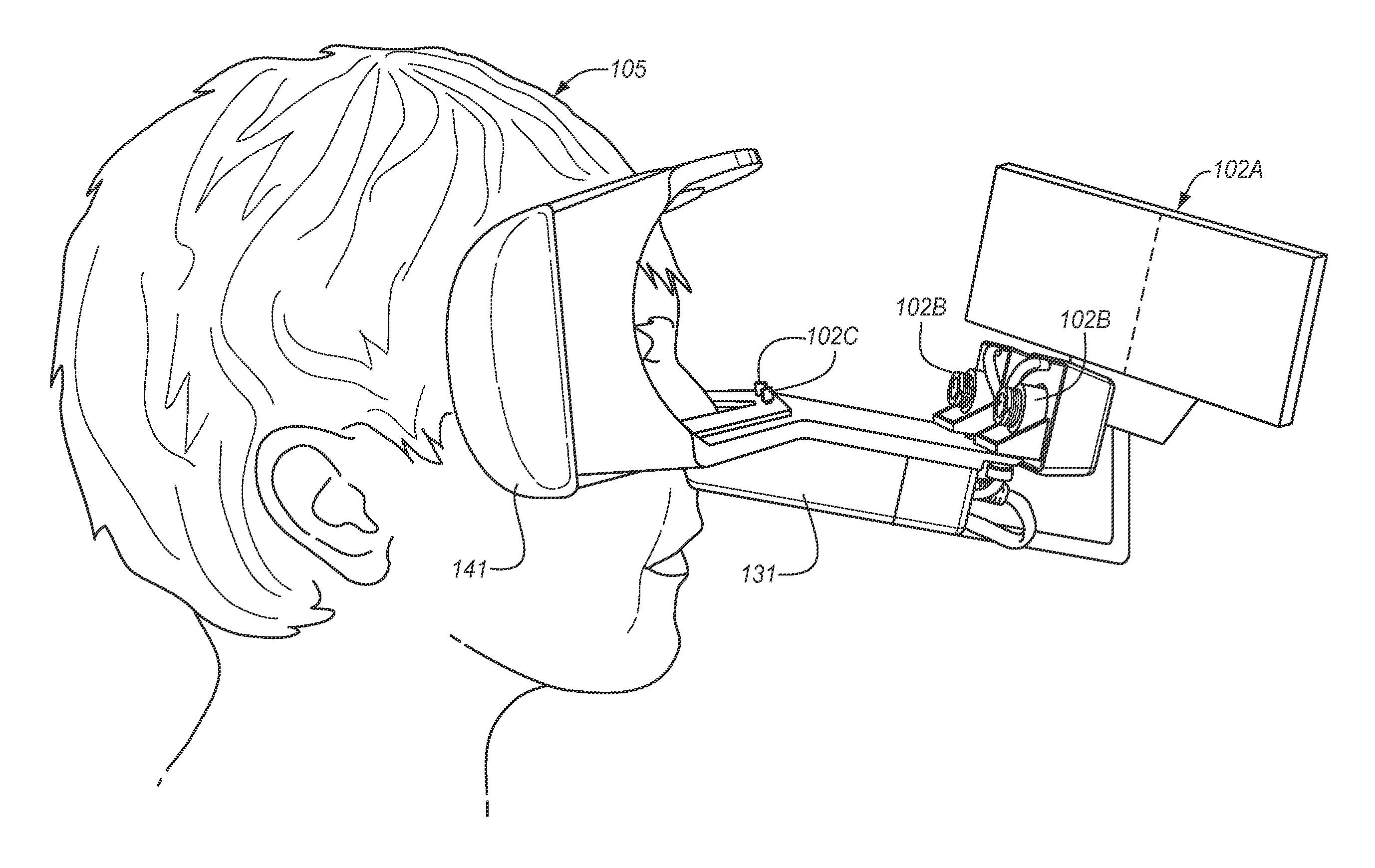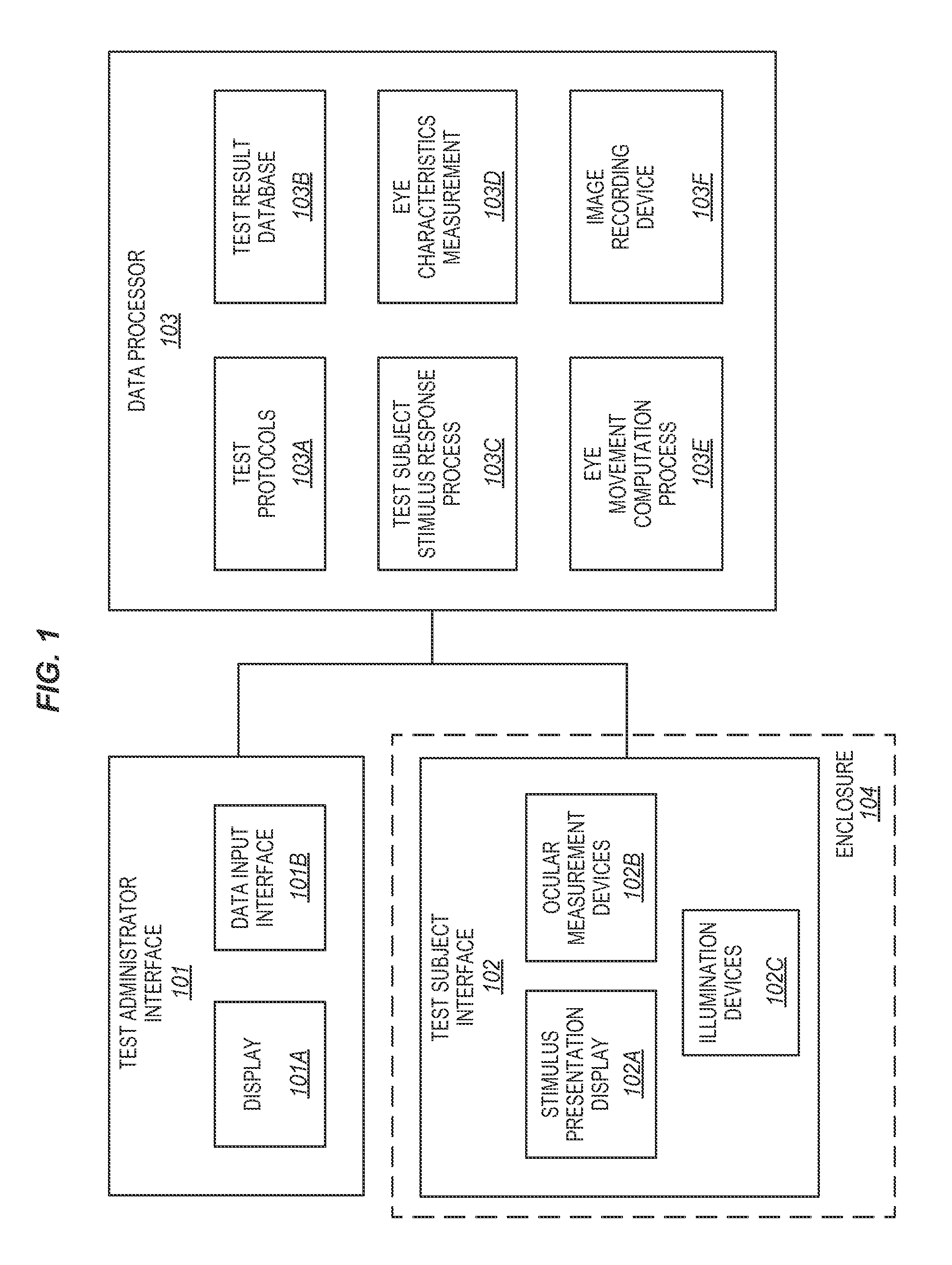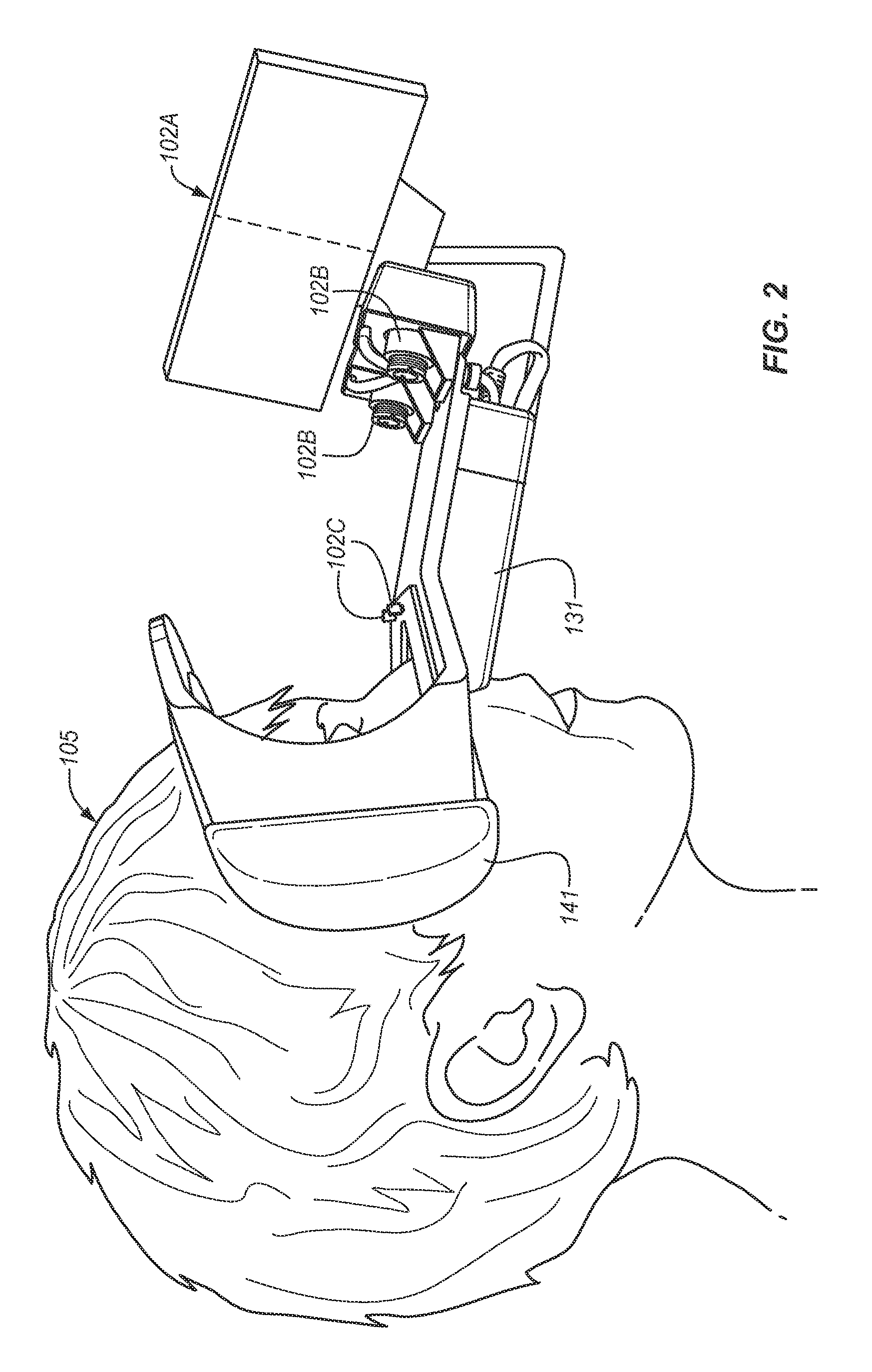System for the physiological evaluation of brain function
a physiological evaluation and brain function technology, applied in the field of system for the physiological evaluation of brain function, can solve the problems of ineffective tool for detecting and monitoring tbi, limited test protocols, and currently available equipment, and achieve the effect of quick, accurate, and non-invasive identification and evaluation
- Summary
- Abstract
- Description
- Claims
- Application Information
AI Technical Summary
Benefits of technology
Problems solved by technology
Method used
Image
Examples
Embodiment Construction
[0018]The prior art is replete with publications that relate to eye movements, techniques for eye tracking, pupillography, and iris identification as a biometric measurement. However, these publications each provide an isolated perspective of a particular aspect of the technology; and the prior art is devoid of the provision of an enhanced, inclusive system that can quickly, accurately, and non-invasively identify and evaluate a test subject to identify the status of their brain function, including the presence of Traumatic Brain Injury (TBI) and its variants.
[0019]The ideal system for the physiologic evaluation of brain function has the following features: self-diagnostics to ensure each test is being performed within pre-defined specification limits; ability to accurately identify the test subject, stimulus paradigms, and test results in a manner that meets the requirements for human subject medical applications; and it must meet the criterion for functional testing in ambient env...
PUM
 Login to View More
Login to View More Abstract
Description
Claims
Application Information
 Login to View More
Login to View More - R&D
- Intellectual Property
- Life Sciences
- Materials
- Tech Scout
- Unparalleled Data Quality
- Higher Quality Content
- 60% Fewer Hallucinations
Browse by: Latest US Patents, China's latest patents, Technical Efficacy Thesaurus, Application Domain, Technology Topic, Popular Technical Reports.
© 2025 PatSnap. All rights reserved.Legal|Privacy policy|Modern Slavery Act Transparency Statement|Sitemap|About US| Contact US: help@patsnap.com



